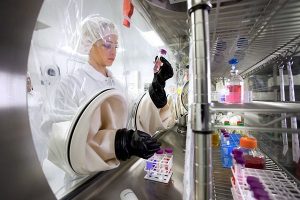
Sterility testing is a critical process for ensuring the safety and efficacy of pharmaceutical and biotech products. It is a regulatory requirement for all sterile drug products, medical devices, and biological products, and is essential to ensure that these products are free from harmful microorganisms. In this article, we will explore the importance of sterility testing and its role in ensuring product safety.
What is Sterility Testing?
Sterility testing is a process used to determine the presence or absence of viable microorganisms in a sample of a product or material. The goal of sterility testing is to ensure that a product is free from any harmful microorganisms that could cause infection or other adverse effects when used.
Why is Sterility Testing Important?
Sterility testing is important for several reasons:
- Regulatory compliance: Sterility testing is a regulatory requirement for all sterile drug products, medical devices, and biological products. It is a critical aspect of quality control and is necessary to ensure that products meet regulatory standards for safety and efficacy.
- Product safety: Sterility testing is essential to ensure that products are free from harmful microorganisms. This is particularly important for products that are intended for use in or on the body, where the presence of microorganisms could cause infection or other adverse effects.
- Risk reduction: Sterility testing helps to reduce the risk of contamination during the manufacturing process. By detecting and eliminating any potential sources of contamination, the likelihood of contamination during the production process is reduced, which helps to ensure the safety and efficacy of the final product.
Get Your Sample PDF Here>>> https://www.alliedmarketresearch.com/request-toc-and-sample/11318
How is Sterility Testing Performed?
Sterility testing can be performed using a variety of methods, depending on the product being tested and the specific regulatory requirements. Some of the most common methods include:
- Direct inoculation: In this method, the product or material being tested is directly inoculated into a culture medium and then incubated under appropriate conditions to allow any viable microorganisms to grow.
- Membrane filtration: In this method, a sample of the product or material being tested is passed through a sterile filter, which traps any microorganisms present in the sample. The filter is then placed on a culture medium and incubated under appropriate conditions to allow any viable microorganisms to grow.
- Immersion: In this method, the product or material being tested is immersed in a culture medium and then incubated under appropriate conditions to allow any viable microorganisms to grow.
- Rapid methods: In recent years, rapid methods for sterility testing have been developed, including ATP bioluminescence, fluorescent staining, and polymerase chain reaction (PCR) methods.
Challenges of Sterility Testing:
While sterility testing is critical for ensuring product safety, there are some challenges associated with the process. Some of the key challenges include:
- Sample preparation: Preparing samples for sterility testing can be time-consuming and requires specialized equipment and expertise.
- False positives: Some methods of sterility testing, particularly direct inoculation, can be prone to false positives, where non-viable microorganisms are detected as viable.
- Validating methods: Each method of sterility testing must be validated for its specific use, which can be a complex and time-consuming process.
- Time-consuming: Sterility testing can be a time-consuming process, particularly if traditional culture-based methods are used. Rapid methods can be faster but may require additional validation and regulatory approval.
Conclusion:
Sterility testing is a critical process for ensuring the safety and efficacy of pharmaceutical and biotech products. It is a regulatory requirement for all sterile drug products, medical devices, and biological products and is essential to ensure that these products are free from harmful microorganisms. While there are challenges associated with sterility testing, advances in rapid methods and other technologies are making the process faster and more reliable. With the continued development of new methods and technologies, it is likely that the challenges associated with sterility testing will continue to be addressed.
Contact Us:
David Correa
USA/Canada (Toll Free): +1-800-792-5285, +1-503-894-6022
help@alliedmarketresearch.com

